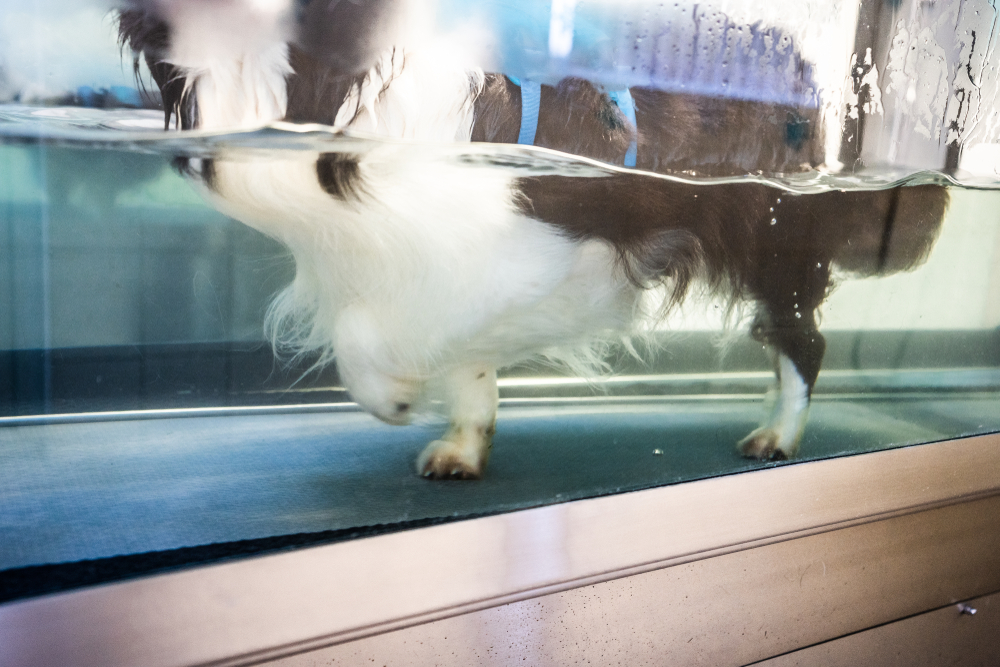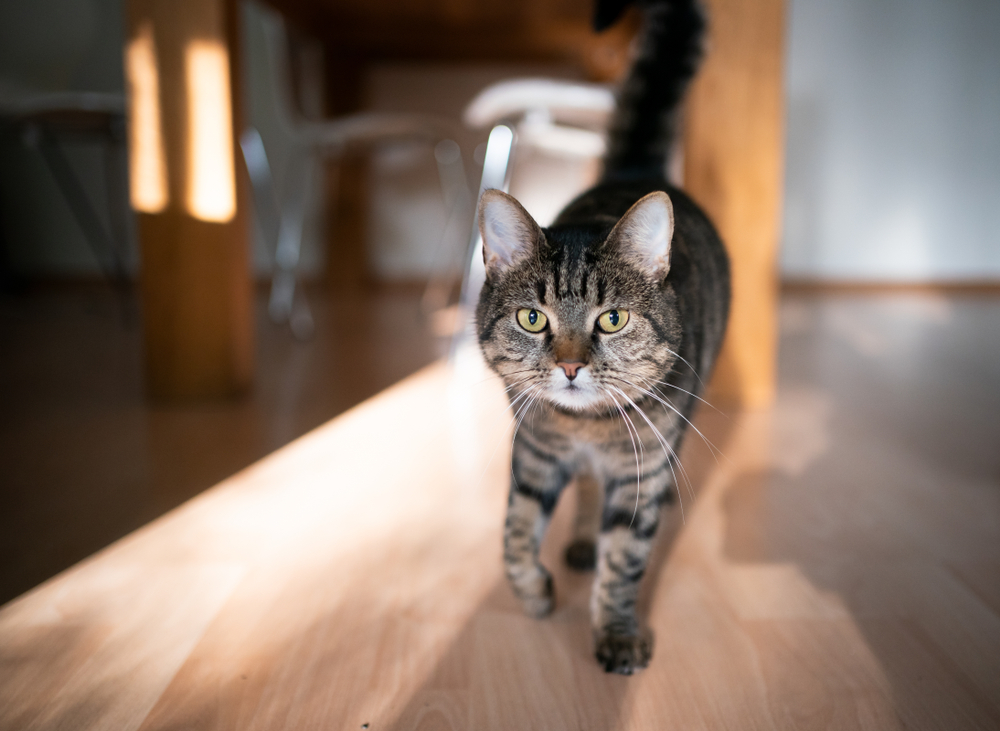If your pet seems to be slowing down, they could be suffering from joint pain. Arthritis commonly affects pets, but initial signs can be difficult to discern because many pets instinctively hide vulnerabilities. Our Marcy Veterinary Clinic team wants to help by providing information about how arthritis affects pets, and treatment modalities for managing the condition.
Pet osteoarthritis
Osteoarthritis (OA) is the most common arthritis type in pets, affecting approximately a quarter of dogs and 60% to 90% of cats. OA is a chronic joint disease characterized by diminished joint cartilage, joint capsule thickening, and new bone formation around the joint that ultimately causes joint pain and limb dysfunction. OA can be primary, because of mechanical wear and tear on the joint, or secondary to a joint injury or abnormality. Your pet’s OA risk may be increased by the following factors:
- Developmental orthopedic disease — Pets affected by conditions such as cranial cruciate ligament disease, hip dysplasia, elbow dysplasia, osteochondritis dissecans, and patella dislocation are at increased risk.
- Genetics — Certain breeds, including German shepherds, rottweilers, and Great Danes, are at increased risk. Scottish Fold cats are particularly prone to severe arthritis caused by a cartilage abnormality that affects multiple joints.
- Age — Senior and geriatric pets are at higher risk, because of the extra wear and tear on their joints.
- Injury — Fractures, dislocations, and other joint injuries can predispose a pet to arthritis.
- Obesity — Obese pets’ extra weight places more strain on their joints, and the extra fat cells produce body-wide low grade inflammation that affects the joints.
- Gender — Male pets seem to be at higher arthritis risk. Sex hormones could contribute to this predisposition.
- Exercise — Pets who do not exercise consistently or who over exercise are at higher risk.
- Diet — A young pet on an inappropriate diet can grow too fast, and suffer orthopedic issues that cause arthritis.
Pet osteoarthritis signs
Joint pain in pets is not always readily apparent. Signs include:
- Limping — Arthritic cats rarely limp, but dogs with joint pain may favor a limb.
- Stiffness — You may notice that your pet is stiff after getting up, or has difficulty rising from a sitting or prone position.
- Changes in jumping behavior — Pets may avoid jumping on high surfaces, show reluctance to jump up or down, or jump less frequently.
- Difficulty on stairs — Pets may avoid stairs, or have difficulty navigating stairs.
- Reduced interaction — Pets may be less interested in play and interaction with you and other pets.
- Increased time resting — Pets may spend more time resting, and they may choose different sites that are easier to access.
- Inappropriate elimination — Cats may stop using their litter box if they cannot comfortably navigate the high sides.
- Altered grooming — Pets may spend less time grooming if joint pain makes the process uncomfortable, and may over groom around painful joints.
- Temperament changes — Pets may be more irritable when handled, or when around other pets.
Pet osteoarthritis diagnosis
Diagnosing OA often starts when you notice changes in your pet’s behavior. Diagnostic methods include:
- Physical exam — We examine your pet’s gait and palpate their limbs to assess for pain, swelling, and decreased range of motion.
- X-rays — X-rays may be recommended to gain further information about your pet’s joints.
- Therapeutic trial — In some cases, we may start your pet on a non-steroidal anti-inflammatory to see if their pain is causing their behavior changes.
- Blood tests — Blood tests may be recommended to rule out other conditions, and to ensure your pet is a good therapeutic trial candidate.
Pet osteoarthritis management
Arthritis is not a curable disease, but many treatments are available to manage the condition, and a multi-modal approach is typically recommended for best outcomes. Treatments include:

- Weight management — If your pet is overweight, we will devise a weight loss program to help them safely lose the excess pounds.
- Environmental management — Modifying your pet’s home environment can help improve their quality of life. Modifications can include:
- Soft, comfortable beds in easily accessible areas
- Steps or ramps that help your pet access high surfaces
- Easily accessible water and food bowls
- Low-sided litter boxes for your cat
- Frequent grooming if your pet has difficulty themselves
- Medication — Several drugs are available to help manage your arthritic pet, and our veterinary professionals will determine the best medications for your pet.
- Joint supplements — Chondroprotective agents may be recommended to support the cartilage and reduce inflammation inside the joint.
- Omega-3 fatty acids — Omega-3 fatty acid supplementation may help reduce inflammation and improve clinical signs in arthritic pets.
- Underwater treadmill — Water’s buoyancy reduces weight put on bones and joints, making this a great, low-impact exercise to increase your pet’s endurance and strength, and improve their range of motion.
- Laser therapy — Cold laser therapy is a noninvasive, drug-free treatment that can decrease pain and inflammation, and is a great adjunct to other arthritis treatment modalities.
- Surgery — In some cases, surgery may be necessary if other treatment modalities are ineffective in managing your pet’s condition.
Arthritis is a serious condition that you should manage appropriately to prevent your pet from suffering. If you have noticed a change in your pet’s behavior, contact our team at Marcy Veterinary Clinic, so we can determine if joint pain is the underlying cause.








Leave A Comment